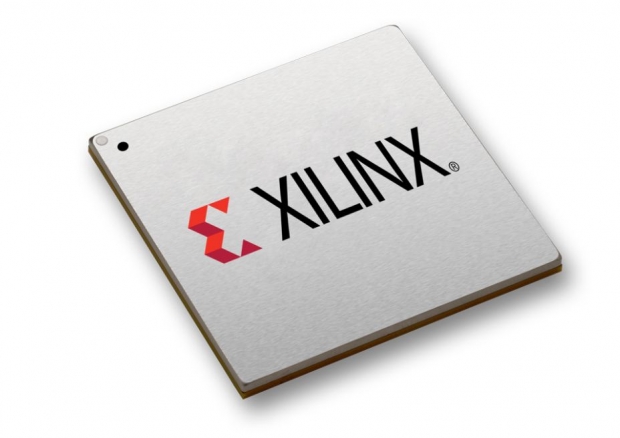The business growth shares a lot of similarities with Nvidia a few years back when Nvidia struggled to grow outside its native computer graphics. Xilinx is known as a FPGA company, but the application of these products now plays a great role in the future of 5G, many AI applications, crucial to data centers such as AWS and Alibaba - to name just a few and of course Automotive and 4G and soon 5G.
60 percent jump in operating income
Its net revenue increased 34 percent year on year from $599 million to $800 million as its operating income jumped a whopping 60 percent from $161 million in financial Q3 2018 to $258 million in Q3 2018.
The company showed an 11 percent jump in diluted earning per share GAAP.
"I am very excited to report yet another record revenue and earnings quarter. During the third fiscal quarter, we delivered revenues of $800 million, representing 34% year over year growth. Based on the guidance we are providing for the fiscal fourth quarter, we expect to exceed $3 billion in annual revenues for the first time in our history. In addition to the robust revenue growth, we also demonstrated strong profitability by posting over 60% growth in non-GAAP operating income and over 40% growth in non-GAAP diluted earnings per share year over year. We continue to execute to our strategy and drive growth across our portfolio", said Victor Peng, President and Chief Executive Officer.
The data center first strategy enrolled by President and CEO Victor Peng is paying off. The company made 21 percent in data center and test measurement and emulation and this number includes crypto currencies too. Communications that includes 4G as well as many super high speed optical connection accounted for 35 percent of the mix with Industrial Aerospace and Defense taking 27 percent of the net revenue by end market. Automotive stood at 15 percent. The year of year growth stood at 14 percent in Data center and TME, 20 percent in Automotive and Broadcast and Consumer, 41 percent in communications and 17 percent in industrial Aerospace and Defense.
By geography, the company made most of its money in Asia Pacific amounting to 46 percent, followed by 28 percent in North America, 18 percent in Europe and eight percent in Japan.
Advanced Products including Alveo, UltraScale+, Ultrascale and 7-series products accounted for 66 percent of the net revenue while Core products including Virtex-6, Spartan-6, Virtex?5, CoolRunner?II, Virtex-4, Virtex-II, Spartan-3, Spartan-2, XC9500 products, configuration solutions, software & support/services accounted for 34 percent.
Data center first
Data Center and Test, Measurement & Emulation (TME) revenues grew 14 percent year over year driven by the Data Center business excluding Cryptocurrency and TME business, which both experienced double digit growth during the quarter.
Xilinx had significant design wins in Data Center across multiple applications including big data acceleration, machine learning inference, video transcoding, network acceleration and storage controllers as well as SmartNIC applications for hyperscalers. Amazon, Alibaba and Huawei are the big hyperscalers to name a few, but the company is working with others too.
The Test, Measurement & Emulation portion includes almost anyone on the planet who wants to make an SoC. They use Xilinx or its direct competitor FPGA to emulate SoC designs before going into production.
Communication revenue scored a 41 percent increase year over year driven by 4G and 5G. Wireless Communications benefited from 5G deployment in South Korea and preparation for 5G deployment in both China and North America as well as ongoing LTE upgrades. Wired business grew year over year with strength from Optical/Data Center Interconnect applications.
Automotive
In the Automotive sector, Xilinx announced cooperation with Daimler. Daimler showcased its AI solution in the new Mercedes GLE Sport Utility Vehicle that is powered by Xilinx machine learning algorithms and MPSoCs. ZF Friedrichshafen tier one supplier in automotive industry announced strategic collaboration on AI based automotive control unit. This is a much bigger deal than most things as ZF is one of the biggest players in the world. Xilinx has a great hardware programable camera technology that is gaining more popularity as well as more than 90 percent of the market share in Lidar.
AI and 5G Zynq thrives
The Advanced Products category increased 51 percent year of very as the revenue from 16nm products had a strong ramp with broad-based adoption, increasing approximately 4x during the same period. Zynq-based revenues, grew approximately 80 percent year over year driven by a broad set of applications across multiple end markets, served in particular by MPSoC. Zynq MPSoC revenues grew over 3x compared to fiscal third quarter 2018.
This is just the beginning as Zynq is a great platform for AI applications that can be adapted and reprogramed on the hardware level and, let's say, accelerate next generation codecs that still haven't made it to the silicon level.
Xilinx taped out Versal - the industry's first Adaptive Compute Acceleration Platform (ACAP) at the end of fiscal third quarter. Versal is the first 7nm TSMC FinFET platform to combine software programmability with domain-specific hardware acceleration and the adaptability essential for today's rapid pace of innovation.
We expect much greater results in the course of fiscal 2019 and 2020 as the company has a great portfolio and will continue to make the right solution for data center, communications, automotive and broadcast consumers as well as industrial, aerospace and defense.
AI, 5G and Automotive are some of the greatest growth catalyst in the upcoming quarter(s).




